
Journal of Remote Sensing
Scope & Guideline
Advancing Remote Sensing for a Sustainable Future
Introduction
Aims and Scopes
- Satellite Remote Sensing Applications:
Focuses on the application of satellite data across diverse fields such as agriculture, forestry, water resources, and urban planning, enabling improved monitoring and management of natural resources. - Data Fusion Techniques:
Explores advanced methodologies for combining data from multiple sources (e.g., optical, radar, and LiDAR) to enhance spatial and temporal resolution in remote sensing analyses. - Machine Learning and AI in Remote Sensing:
Investigates the use of machine learning algorithms and artificial intelligence to automate data processing, enhance classification accuracy, and extract meaningful insights from complex datasets. - Environmental Monitoring and Management:
Emphasizes the role of remote sensing in assessing environmental changes, such as deforestation, land cover changes, and climate impacts, thus supporting sustainable development goals. - Innovative Sensor Technologies:
Researches the development and application of new sensor technologies, including hyperspectral imaging and satellite altimetry, for improving the accuracy and efficiency of remote sensing measurements.
Trending and Emerging
- High-Resolution Remote Sensing:
There is an increasing emphasis on high-resolution remote sensing data, with studies focusing on fine-scale mapping and analysis of environmental features, such as urban areas and agricultural landscapes. - Spatiotemporal Data Fusion:
Recent papers demonstrate a strong trend towards spatiotemporal data fusion techniques that integrate various datasets to enhance monitoring capabilities, especially in dynamic environments. - Climate Change Impact Assessment:
Research on the implications of climate change using remote sensing data is on the rise, reflecting the urgent need to understand and mitigate environmental impacts. - Machine Learning and AI Integration:
The application of machine learning and artificial intelligence in remote sensing is rapidly gaining traction, with numerous studies exploring its potential for improving data interpretation and analysis. - Sustainable Development Goals (SDGs) Monitoring:
The journal is increasingly publishing studies that utilize remote sensing for monitoring progress towards the Sustainable Development Goals, indicating a strong alignment with global sustainability initiatives.
Declining or Waning
- Traditional Remote Sensing Techniques:
There is a noticeable decrease in papers focusing solely on conventional remote sensing methods, such as basic optical imagery analysis, as newer technologies and methodologies gain traction. - Static Land Cover Mapping:
The frequency of studies dedicated to static land cover mapping using traditional classification techniques has waned, likely due to the growing interest in dynamic and change detection methodologies. - General Reviews Without Novel Contributions:
The journal has seen a decline in general review papers that do not propose new insights or methodologies, as the focus shifts towards more innovative and impactful research contributions. - Land Surface Phenology Studies:
Research specifically addressing land surface phenology using traditional methods has become less frequent, possibly due to the adoption of more advanced time-series analyses and machine learning approaches.
Similar Journals
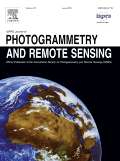
ISPRS JOURNAL OF PHOTOGRAMMETRY AND REMOTE SENSING
Empowering Researchers with Cutting-Edge InsightsISPRS Journal of Photogrammetry and Remote Sensing is a prestigious publication at the forefront of the fields of photogrammetry and remote sensing. Established in 1989 and published by Elsevier, this journal has consistently maintained a strong academic standing, currently holding a top-tier Q1 ranking across multiple categories, including Atomic and Molecular Physics, Computer Science Applications, and Engineering. This reflects its vital contribution to advancing knowledge and technology in these dynamic fields. The journal is not only a vital resource for researchers and professionals but also serves as an essential academic platform for students keen on delving into the latest developments in geospatial sciences. The journal operates under a non-open access model, ensuring that submitted research adheres to the highest standards of scholarly communication and integrity. With an impactful focus, it brings innovative research, comprehensive reviews, and significant case studies to a global audience. The ISPRS Journal is crucial for those aiming to enhance their understanding and application of remote sensing techniques within various scientific disciplines.

CANADIAN JOURNAL OF REMOTE SENSING
Advancing Knowledge in Earth and Planetary SciencesCanadian Journal of Remote Sensing is a prestigious, peer-reviewed journal published by Taylor & Francis Inc., based in the United Kingdom. With an impressive impact factor and a Scopus ranking placing it in the 76th percentile among general Earth and Planetary Sciences, this journal is integral for researchers and professionals exploring the dynamic field of remote sensing. Since its inception in 1975 and now continuing through to 2024, it has been a platform for disseminating cutting-edge research and advancements in both methodologies and applications across diverse environments. As of 2023, it has transitioned to Open Access, ensuring wider access to its scholarly articles, which cover a broad spectrum of topics including satellite imagery, data interpretation, and environmental monitoring. This journal is not only crucial for fostering innovation and collaboration within Earth sciences but also serves as a critical resource for students and academics alike, eager to stay abreast of the latest developments in remote sensing technology and methodology.

ISPRS International Journal of Geo-Information
Empowering knowledge through open access geospatial research.ISPRS International Journal of Geo-Information, published by MDPI, stands at the forefront of the field of geospatial sciences, contributing valuable knowledge and research insights since its inception in 2012. This open access journal, which boasts an impressive collection of articles that emphasize the integration of geographic information systems (GIS) in Earth and planetary sciences, currently achieves a remarkable standing, with a 2023 impact factor ranking in the Q1 category for both Earth and Planetary Sciences and Geography, Planning and Development. Researchers and professionals engaged in the study of spatial data, remote sensing, and innovative geoinformation technologies will find the journal an essential resource, offering diverse perspectives and methodologies. With its open access model, the journal aims to promote the dissemination of knowledge globally, fostering collaboration among scholars while pushing the boundaries of research in geoinformation disciplines. The journal is based in Switzerland and is well-positioned to contribute significantly to the understanding and application of geospatial data for societal advancements.
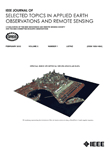
IEEE Journal of Selected Topics in Applied Earth Observations and Remote Sensing
Illuminating the Path for Remote Sensing Advancements.IEEE Journal of Selected Topics in Applied Earth Observations and Remote Sensing is a premier peer-reviewed journal published by the IEEE-INST ELECTRICAL ELECTRONICS ENGINEERS INC, focused on advancing the field of Earth observation and remote sensing technologies. With an impressive impact factor, this journal ranks in the top quartile (Q1) for both Atmospheric Science and Computers in Earth Sciences, underscoring its significance and influence in the academic community. Open access since 2020, it facilitates broader dissemination of research findings to enhance global visibility and accessibility for researchers, professionals, and students alike. Spanning the years from 2008 to 2024, the journal covers a myriad of topics that highlight innovative applications of remote sensing data and technologies in addressing environmental challenges. With a Scopus ranking placing it in the 91st and 89th percentiles, respectively, in its categories, the journal serves as a vital resource for advancing scholarly discourse and collaboration in Earth sciences.
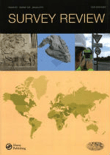
SURVEY REVIEW
Connecting Disciplines Through Critical Insights and ResearchSURVEY REVIEW is a distinguished journal published by Taylor & Francis Ltd, focusing on a diverse range of disciplines including Civil and Structural Engineering, Computers in Earth Sciences, and Earth and Planetary Sciences. With an ISSN of 0039-6265 and an E-ISSN of 1752-2706, this journal has been a vital resource for scholarly communication since its inception in 1963. Positioned within the Q2 and Q3 quartile categories according to the latest rankings, it is recognized for its significant contributions to advancing knowledge in multiple fields, specifically holding a rank of 64/159 in Earth and Planetary Sciences and 32/73 in Computers in Earth Sciences. Researchers, professionals, and students benefit from its critical insights into complex engineering and scientific challenges. Although SURVEY REVIEW is not open access, it remains a highly cited journal, making it an essential avenue for disseminating pivotal findings that impact both academia and industry practices.
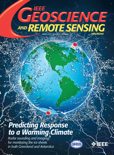
IEEE Geoscience and Remote Sensing Magazine
Advancing Knowledge Through Innovative ResearchIEEE Geoscience and Remote Sensing Magazine, published by the esteemed IEEE-Institute of Electrical and Electronics Engineers Inc, serves as a pivotal platform for cutting-edge research in the realms of geoscience, remote sensing, and related disciplines. With an ISSN of 2473-2397 and E-ISSN of 2168-6831, this prestigious magazine has established itself as a leading resource in its field, achieving a Q1 ranking across multiple categories including Computer Science, Earth and Planetary Sciences, and Electrical and Electronic Engineering. Researchers will appreciate its high impact, recognized by impressive Scopus rankings—2nd in Physics and Astronomy, 3rd in Earth Sciences, and 7th in General Computer Science, placing it firmly in the top percentiles globally. Published bimonthly and compatible with various access options, the magazine aims to disseminate innovative solutions and technological advancements, fostering collaboration and knowledge-sharing among professionals, students, and industry stakeholders. As it converges its contributions from 2013 to 2024, IEEE Geoscience and Remote Sensing Magazine continues to significantly influence the scientific community's understanding of the planet and its systems.

South African Journal of Geomatics
Innovating Mapping Technologies for Global ImpactSouth African Journal of Geomatics is a pivotal platform dedicated to the advancement of geomatics, focusing on the dynamic intersection of geographic information science, surveying, and mapping technologies. Published by CONSAS CONFERENCE, the journal serves as a crucial resource for researchers, professionals, and students in the geomatics field, providing insightful, peer-reviewed articles that explore contemporary challenges and innovations. Operating under an open-access model, the journal ensures the wide dissemination of knowledge, promoting collaboration and scholarly exchange among the global geomatics community. With a commitment to enhancing the visibility of significant research and fostering academic discourse, the South African Journal of Geomatics plays a vital role in contributing to the development of this essential discipline in South Africa and beyond.
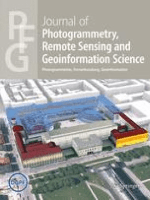
PFG-Journal of Photogrammetry Remote Sensing and Geoinformation Science
Exploring the Frontiers of Earth and Space SciencePFG-Journal of Photogrammetry Remote Sensing and Geoinformation Science, published by Springer International Publishing AG, stands as a prestigious peer-reviewed journal at the intersection of cutting-edge technology and the vital disciplines of Earth and Planetary Sciences, Geography, and Instrumentation. With an impressive impact factor and ranking within the Q1 category, this journal regularly publishes innovative research, methodologies, and case studies that drive advancements in the field. As of its converged years from 2017 to 2024, the journal focuses on the latest trends in photogrammetry, remote sensing, and geoinformation science, providing a crucial platform for researchers, professionals, and students alike. Its open access model ensures that findings are widely accessible, fostering collaboration and knowledge dissemination throughout the global scientific community. Located in Switzerland, geographical and technological diversity is embraced, making the PFG Journal an essential resource for those dedicated to exploring the complexities of our planet and contributing to sustainable development.
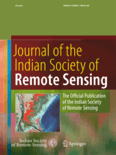
Journal of the Indian Society of Remote Sensing
Championing Excellence in Remote Sensing StudiesJournal of the Indian Society of Remote Sensing, published by SPRINGER, stands as a prominent contribution to the fields of Earth and Planetary Sciences and Geography, Planning and Development. With an ISSN of 0255-660X and an E-ISSN of 0974-3006, this esteemed journal has been in circulation since 1973, showcasing a rich repository of research and advancements in remote sensing applications, methodologies, and technologies, specifically within the Indian context and beyond. The journal's impact is underscored by its placement in the Q2 category of both Earth and Planetary Sciences and Geography as of 2023, ranking impressively in the Scopus database with significant percentiles. With the intent to bridge the gap between theory and practical application, it invites scholars, researchers, and professionals to contribute innovative studies that enhance our understanding of remote sensing and its implications in various domains. The Journal of the Indian Society of Remote Sensing is a vital resource for anyone looking to remain at the forefront of research in this dynamic field.

Remote Sensing
Exploring Earth's Mysteries Through Remote SensingRemote Sensing is a highly esteemed journal published by MDPI, dedicated to the domain of Earth and Planetary Sciences. With an impressive impact factor reflected in its rank of #16 out of 195 in the general Earth and Planetary Sciences category, this journal achieves a commendable 92nd percentile among its peers, indicating its significant contribution to the field. Since its inception in 2009 as an Open Access journal, it has enabled researchers, professionals, and students from around the globe to access high-quality, peer-reviewed articles that delve into the latest advancements in remote sensing technologies, methodologies, and applications. Based in Switzerland, Remote Sensing serves as a vital platform for disseminating innovative research that supports and enhances our understanding of Earth's processes and environments, ensuring scientific knowledge remains freely accessible and impactful.